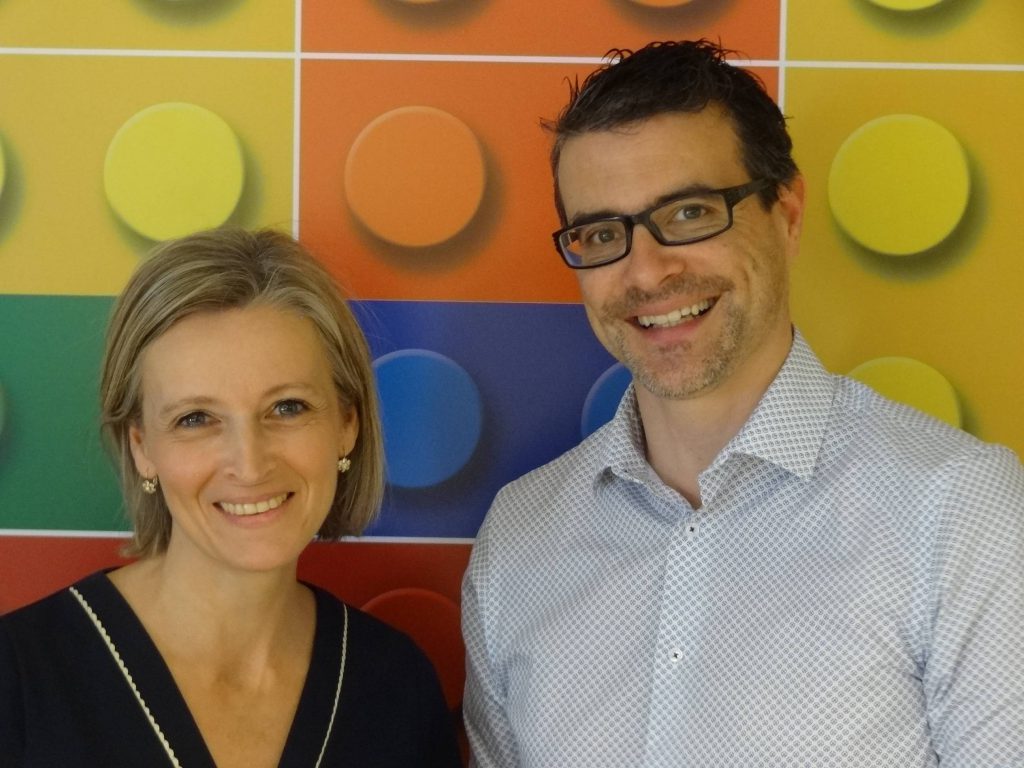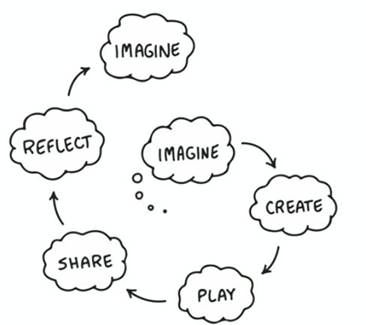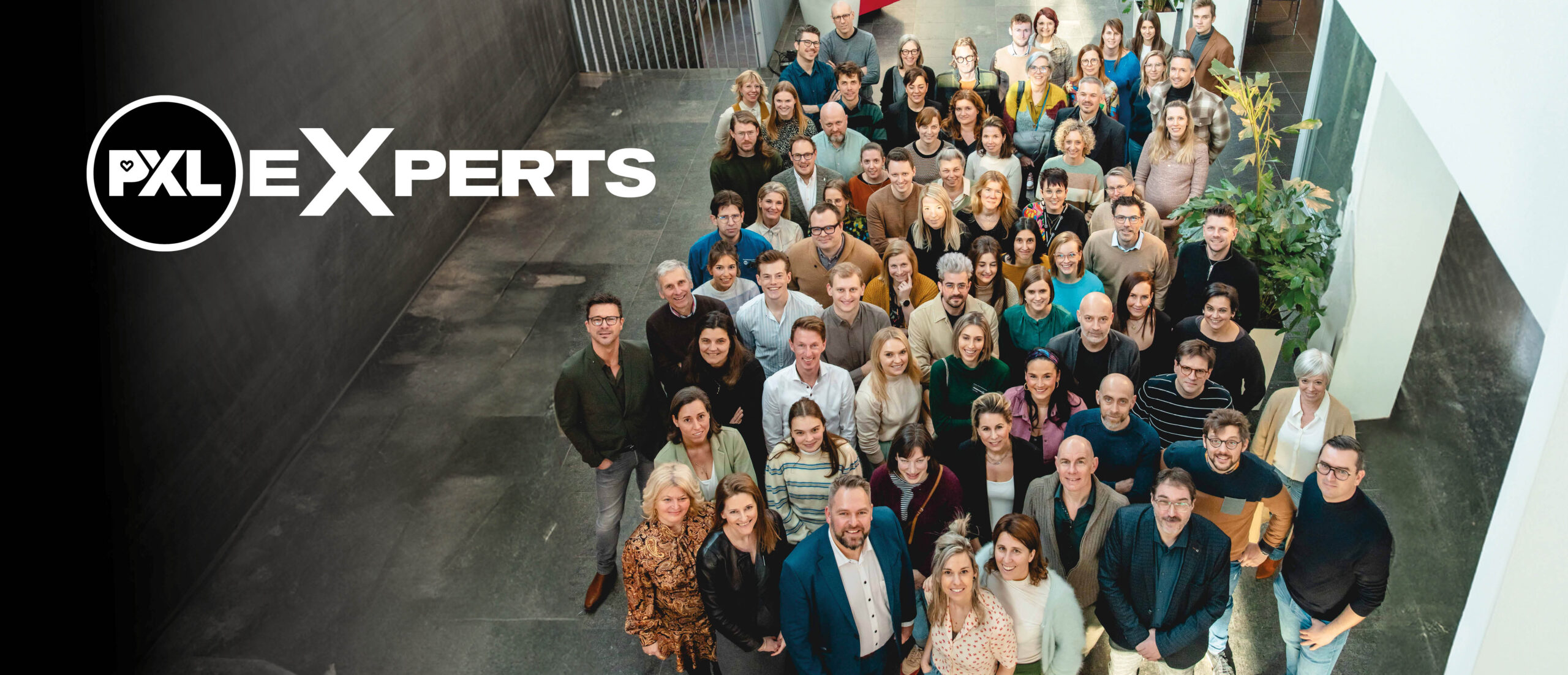Els Knaepen and Jochen Didden on digital technology and creative thinking in education

How should education prepare our children for their place in an increasingly digital society? How do we stimulate their creativity rather than obstruct it? Els Knaepen and Jochen Didden (PXL University College) travelled to Sofia and looked for answers together with fellow colleagues. An interview.
PXL eXperts: You have just returned from an international conference in Sofia (Bulgaria) called Educate to create: from digital consumers to digital creators. What was your motivation to attend that conference? And what did you do and learn?
Els Knaepen: We were invited by the European Commission, because in recent years, in our LEGO Education Innovation Studio (also run by Catherine Roden and Leen Smets) we have built up a lot of experience with regard to digital learning, STEM didactics and creative thinking. In the autumn of 2017, we organised a webinar on computational thinking at the request of European Schoolnet. That webinar was very well received and it led to an increasing number of working visits from education experts and policy makers all over Europe. Recently, we also gained interest from the States. In June 2018 we will travel to Boston for a symposium on LEGO Education and STEM didactics.
We always assume that all young people are ‘digital natives’, but is that true?
Jochen Didden: The conference in Sofia was prompted by a number of observations in contemporary education. We all know that digital technology is omnipresent today: it transforms the way we live, communicate and learn. Boundaries between formal and informal learning – at school and outside a school context – are blurring due to the digital revolution. Young people who vlog or build websites, actually learn, without being aware of it. Everything is evolving so quickly and lifelong learning becomes even more important than before.
And yet, there are a number of paradoxes. First, we always assume that all young people are ‘digital natives’, but is that true? A growing number of research studies question whether young people have more than a superficial knowledge of the technology that surrounds them. Their digital skills are often overestimated.
Second: yes, society is becoming more and more digital, but only 56% of Europeans have at least ‘basic’ digital skills and can participate fully in social, civic and economic life. This means that 220 million Europeans – 220 million! – have difficulties in finding their place in that digital society, through limited access, lack of skills or lack of motivation. That’s a huge number, since 90% of jobs in the future will require some level of digital competence.
The most disturbing paradox in education: the longer you go to school, the less creative you become.
Third and last, the most disturbing paradox in contemporary education: the longer you go to school, the less creative you become. Schools kill creativity. Young children have a lot of imagination and are very creative: if they are asked to build a small duck with LEGO blocks, you will get five different ducks in no time. Give an 18-year-old the same assignment and he will ask you for a step-by-step plan. The more knowledge, the more you elaborate on what you already know and the less openness towards new, creative perspectives. We must be more aware of this in education, because – as Ken Robinson rightly points out – creativity and imagination are desperately needed to meet the challenges of the 21st century.
Els Knaepen: Those were indeed the kind of topics in Sofia that we discussed in depth with policy makers, educators, researchers, business innovators and other partners, in workshops and in panel discussions. The concrete output is the so-called Sofia Call for Action, a charter with recommendations and action points that policy makers and educators now have to put into practice. The goal: a stronger emphasis on digital, 21st-century skills in our education. From the very beginning, by the way, from pre-school education onwards. Only by planting the seeds there, we can shape the future and redefine and change traditional roles.
PXL eXperts: Jointly with Catherine Roden and Leen Smets you are the staff at PXL’s LEGO Education Innovation Studio. What are the main activities developed by the studio?
Els Knaepen: There are three target groups: teachers, pupils and a third, more diverse group of external ‘extracurricular’ partners in the broad field of youth and education. For teachers, we offer training days and workshops. In the past academic year we organized eleven training days, both in our studio and at schools. In addition, we regularly receive classes for a ‘hands on’ LEGO workshop in our studio. Also the third target group is expanding rapidly: we collaborate with the city of Genk (de Technologiebende), with Ontdek Techniektalent (province of Limburg), with Cosmodrome, with First LEGO League (a competition sponsored by VOKA-Limburg), we were recently involved in the opening ceremony of Huis van het Kind Kaza Kozy in Hasselt, etc.
Jochen Didden: We are also involved in various research projects initiated and coordinated by the centre of expertise PXL Onderwijsinnovatie, viz. the projects Neighbourhood Coding and ‘Iedereen mediawijs’. Thanks to a grant by Digital Belgium Skills Fundwe develop workshops for children aged 8 to 12 years old, specifically targeted at the vulnerable neighbourhoods in the province of Limburg. In these workshops children learn to code and program in a simple, playful way.

PXL eXperts: And how do you do that? How can you increase children’s digital skills?
Jochen Didden: In our studio we work according to the 4C didactics developed by LEGO Education: connect, construct, contemplate and continuous. Step 1: you introduce an activity that appeals to the pupils’ world and that offers them a sufficient challenge. For example, a group discussion about the discovery of a new piece of untouched nature that could be investigated by new robots. But how do you tackle such a challenge? The pupils then have to come up with possible solutions, related to this ‘problem’.
Els Knaepen: Coming up with those solutions is something they do in smaller groups and in a very visual way, using LEGO building blocks, in the construct phase. Since they use their hands while thinking of solutions, their brains are triggered in a different way and they can reflect more creatively. The LEGO building they make immediately gives a visual representation of what they have in mind.
Jochen Didden: Then the third step and that’s a very important one: contemplate. The various solutions that the children have come up with and built with blocks, are now reflected upon, discussed and assessed in class. By using ‘what if’ questions we try to bring together and summarize their knowledge and reflections. They learn to listen to each other and they gain new insights about their ‘research question’.
Els Knaepen: And those insights will be the input for a continueassignment: a new assignment, with extra criteria and new challenges.
In today’s world, there is not just one right solution, there are thousands.
Jochen Didden: What we notice, is that many teachers stop in phase number 2, construct. That’s a shame, because the most important aspect – reflecting on possible solutions without any restraints – is then notoriously lacking. Pupils will not get beyond the observation that ’they’ve built something with LEGO blocks’. That is not enough: it has to be fun AND facts. A nice challenge is OK, but that challenge must also be explored in such a way that pupils, when leaving the class, feel that they have learned something. That teachers do not take that extra step, often has to do with a lack of courage. They do not dare to step outside their comfort zone, because they are afraid: afraid of the unknown, afraid that their digital literacy is lower or inferior to their pupils’. But fear doesn’t help them…
Els Knaepen: That is indeed a problem: teachers who stubbornly cling on to the old ‘fill the blank spaces’ methodology in which there is only one right solution. In today’s world there is not just one right solution, there are thousands. If we want broadly educated, 21st century proof digitally literate teachers, then the teachers themselves need to experiment and should be encouraged to step outside their comfort zone. And yes, that requires a mental switch. Giving up control, giving young people the freedom to develop something that can not be predicted: that is not easy, but open ended learning pays off.
Jochen Didden: True. You know, in addition to the 4C didactics developed by LEGO Education, we at PXL’s LEGO Education Innovation Studio also use the 4 Ps for creative thinking: passion, projects, peers, and play (see below for more details). We think this is a successful recipe for making pupils and students creative thinkers, ready for the challenges of the 21st century. And as far as those 21st-century skills are concerned, let it be clear that they contain a lot more than programming skills and digital media. It is also about about problem-solving skills, working together, knowing how to search for information efficiently, and so on. That is a range of skills that are essential for the jobs of tomorrow. Even though we do not yet know those jobs: will our children of tomorrow become nano doctors or fire brigade drone specialists? Time will tell …
PXL eXperts: That’s a nice one to end this interview. Many thanks and good luck in developing PXL’s LEGO Education Innovation Studio.
The 4 Ps: a successful recipe for making your students creative thinkers

PASSION
Invest in interest! It will lead to higher motivation and more knowledge.
PROJECTS
Make young people learn concepts and skills within a process of various projects.
PEERS
No DIY (Do It Yourself) but MI2 (Make It Together).
PLAY
Go for a playful approach that results in creative thinking and learning.
Contact LEGO Education Innovation Studio:
els.knaepen@pxl.be / +32 475 92 58 93 (coordinator)
jochen.didden@pxl.be (LEGO Education Academy Certified Trainer)
catherine.roden@pxl.be (LEGO Education Academy Certified Trainer)
